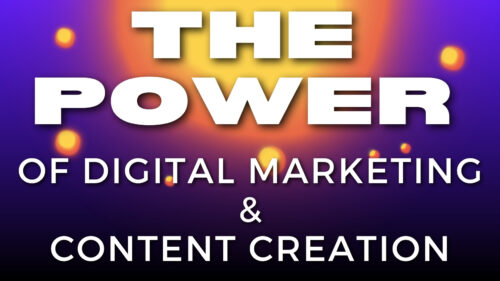How to Create a Content Creation Workflow That Works
If you’re a content creator, you probably feel that producing high-quality content on a consistent basis can be daunting at times.
Creating AND posting every single day actually can get exhausting.
And what can make it even more of a challenge for you is time limitations due to everyday life. Or the other tasks you need to do if you’re a parent, student, business owner, or have another job.
Even worse, you may find yourself struggling with tight deadlines and feeling overwhelmed by all that needs to be done.
Well, the good news is there’s a solution to your problem:
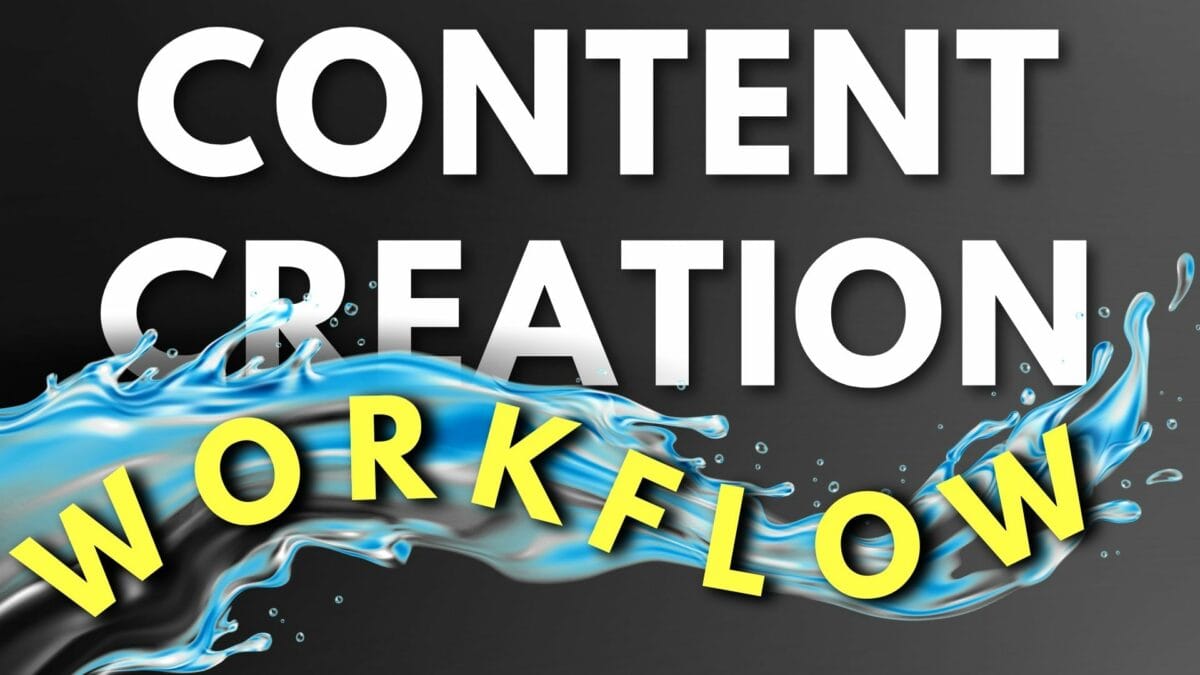
Content Creation Workflow
This is the key to alleviating these issues and making sure you stay productive while still delivering great content.
Creating a content creation workflow may seem like another daunting task, but it doesn’t have to be.
Making a workflow that’s tailored to your process ensures that you won’t need to try the latest “tips and tricks” or switch your production process around all the time.
You’ll know exactly what you need to do and how it needs to happen every. single. time. (a.k.a. consistency)
So… What Exactly is a Content Creation Workflow?
Content creation workflow is a step-by-step process to creating your content as efficiently and effectively as possible, as well as keeping you organized and productive (and not just doing busy work or stopping and starting projects).
It outlines each step and task of your process, as well as any tools or resources needed at each stage.
It’s a time and energy-saver in the long run.
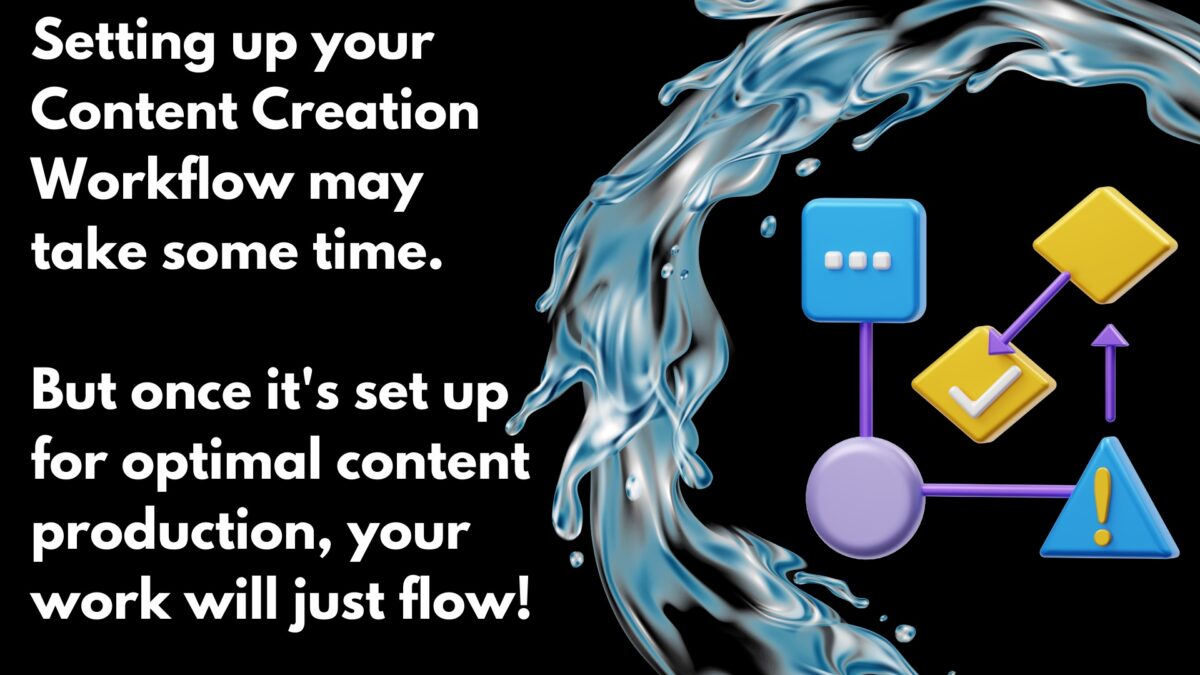
This Is What a Workflow Does For You:
- Streamlines your content creation process by providing a structure for tasks, tracking progress, and keeping you accountable for doing a task to completion.
- Identify and minimize delays, distractions, and other obstacles that get in the way of the process.
- Reduces the chances of error by identifying inefficiencies and resolving them.
- Increases website traffic and conversions by regularly posting quality content tailored to your target audience.
- Analyzes the performance of your content and update it as needed to stay ahead of your competitors.
- Creates a more consistent brand voice so you can ensure that all of your content is aligned with the brand’s identity.
- Helps you to decrease revisions and backtracking time, and minimize waiting times between idea and publication.
- Reduces stress and burnout associated with last-minute scrambling for blog posts or social media content.
Here’s The Short Solution
- Identify the different types of content you want to produce.
- Decide which platforms these types of content should be distributed on.
- Create templates and SOPs (Standard Operating Procedures) for each type of content and social media platform, detailing the steps to take throughout the workflow process: brainstorming, creating, editing, publishing, and promoting it.
- Schedule your content to be posted. We use SmarterQueue.
- Monitor your progress regularly throughout each stage with analytics tools to track performance metrics like engagement rates or visitor retention rates.
What Your Content Creation Workflow Should Include
Your Goals
- Set clear and measurable goals and targets for the content.
- Determine the key results that your content has to achieve.
- Be mindful of limited resources such as your time for writing, creating graphics, fact-checking, outsourcing work, recording, and editing.
Create SOPs
Create Standard Operating Procedures (SOPs) for every part of your workflow process.

Things To Include:
- Time blocks dedicated to completing each task (ex: 30 minutes for writing a blog, 2 hours for recording videos, batching content for a week every month, etc.)
- Time for formatting content to post on multiple platforms
- Mark deadlines for each task in your calendar
- Weed out the unnecessary tasks that aren’t important
- Prioritize the urgency and frequency of each task
Content Inventory
A content inventory is a list of all your existing content, including blog posts, videos, images, podcasts, and other types of media.
And the purpose of a content inventory is three-fold:
- It helps you identify any existing assets that can be reused.
- It primes you for correct positioning and messaging.
- It lays the groundwork for cross-linking old content to your new content.
Research
- Identify the type of content you want to create and what it should look like.
- Do market research to understand your audience and the topic/s you’re covering in more detail.
- Perform SEO research to identify keywords and opportunities for ranking well in search engines such as Google or YouTube if applicable (use tools such as Ahrefs or SEMRush).
- Analyze your competitors’ content to see how they are attracting their target audience with their marketing efforts (use tools like BuzzSumo).
Content Publishing and Posting Schedule
- Identify how often you’ll publish content.
- Work backward from your publishing date and identify the tasks or actions you need to do everyday to be on schedule.
- Make sure tasks are added to your weekly calendar so you can regularly keep track of completed tasks and progress.
- Maximize your content strategy and schedule social media posts using SmarterQueue, a social media management software that allows you to organize, curate, schedule, and track the analytics of your content in one place!
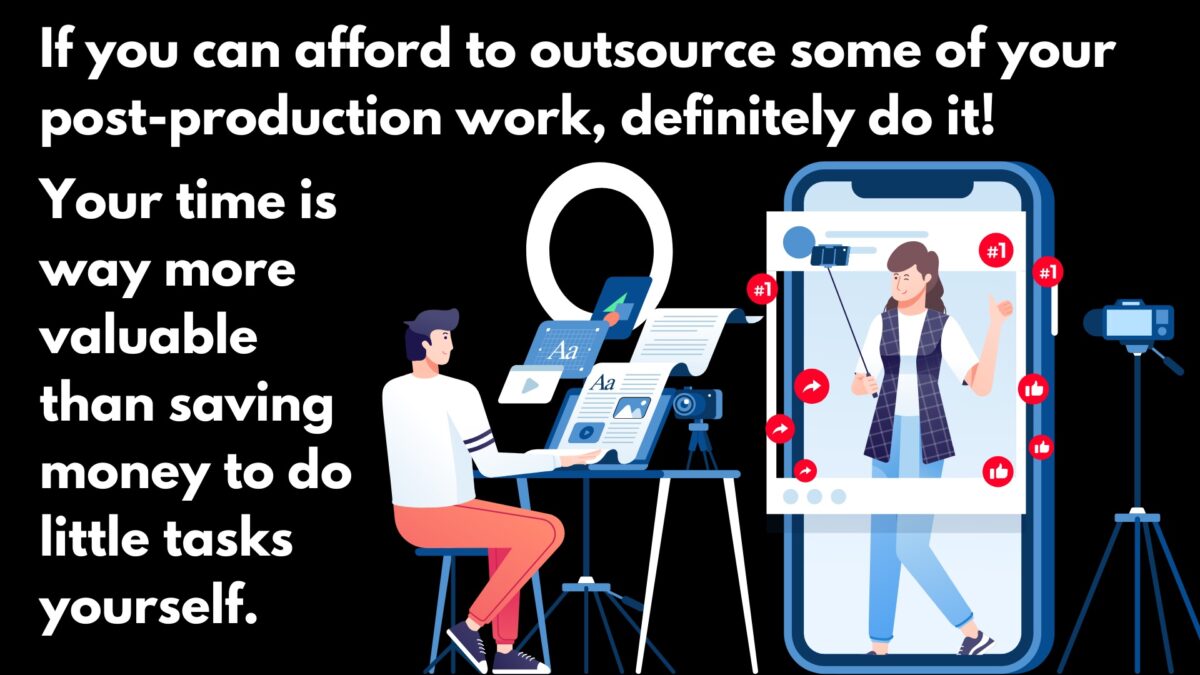
Editing
- After the first draft of your content is ready, review it to make sure your brand’s messaging, positioning, and tone are aligned.
- Fact-check any educational or informative content you’ve created to double-check that it’s accurate.
- Add CTAs and images for better engagement.
- Metadata such as titles, descriptions, keywords, etc., should also be added.
- Make sure no more revisions are necessary before posting.
What Tools Do You Need For a Content Creation Workflow?
- Canva and Adobe Photoshop for design.
- Video editing software like Final Cut Pro and CapCut (free).
- Social media management platforms such as SmarterQueue for managing social media campaigns and scheduling posts.
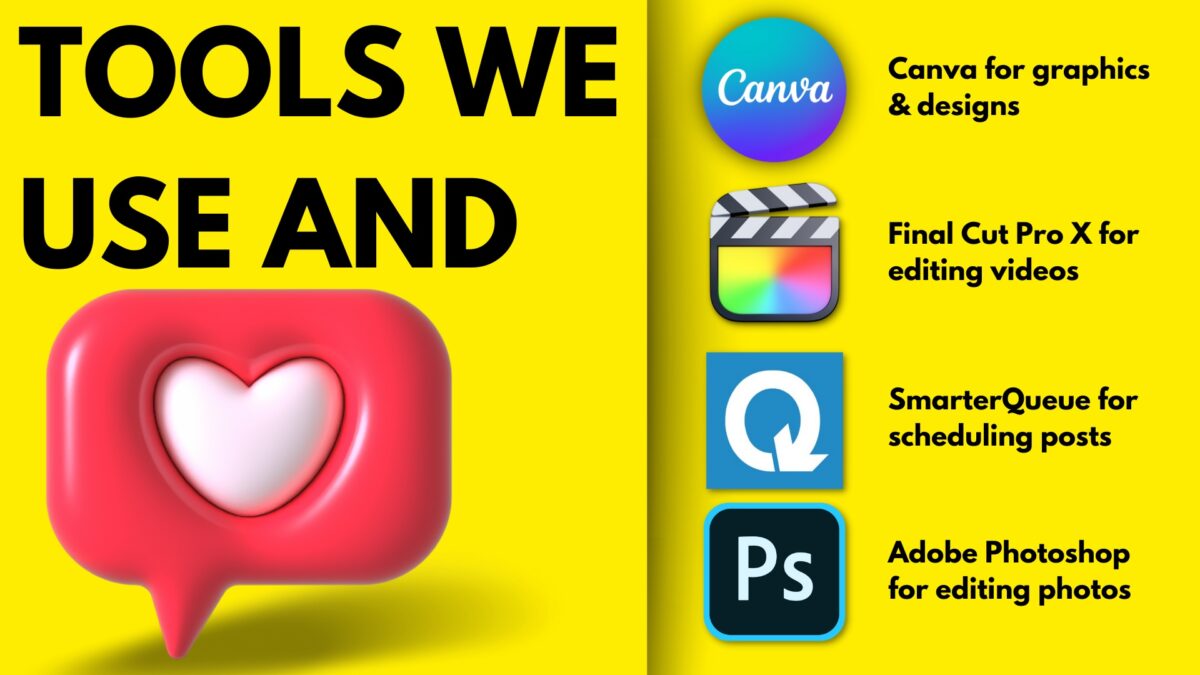
How Do I Measure The Success of My Content Workflow?
- Include auditing and analytics as part of your content creation workflow. Measure the success of your campaigns by tracking performance metrics such as engagement, views, and conversions.
- Regularly audit your content to make sure it’s high quality, optimized, and tailored to your audience.
- Don’t be afraid to make changes to your workflow based on measured performance over time, such as redefining brainstorming stages if needed or improving engagement with audiences through unique content ideas.
- Reflect on changes made over time and keep tweaking the process until it works best for your content goals.
Now I’m sure you’re wondering why we don’t just have a workflow template for you and add it to this blog.
We do have one! And you can get it in our eBook “Content Done Right” which includes more information and worksheets/templates for you to plan and create EFFECTIVE content that sells.
But you should also know that the content creation workflow for one creator may not work for the next. It’s not a cookie-cutter copy-and-paste thing you can do because every content creator is different and many factors come into play.
Even in the same niche, every content creator must find a way to produce content that stands out from the rest as well as managing:
- Personal lives
- School and jobs
- Time to produce content
- The type of content they create
- Managing a brand and/or business
So what works for them may not work for you. That’s why it’s important to curate your own content creation workflow.
To get more guidance on creating your workflow + more, click here to grab our eBook Content Done Right.



